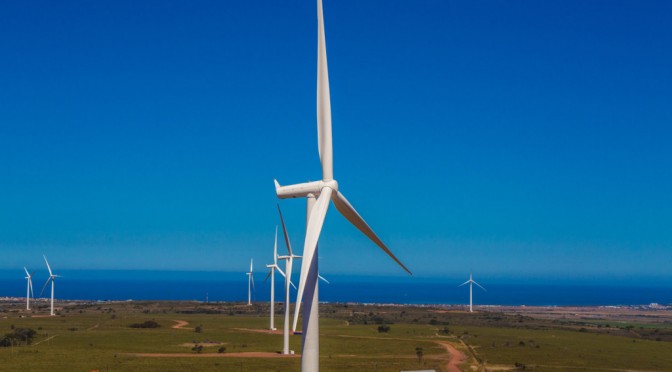Eskom’s power generation woes mean that it may be time to look to alternative energy sources that can assist in keeping the national power grid running.
This is particularly important given the monumental failure that has been South Africa’s two newest coal plants – Medupi and Kusile.
One possible alternative energy source is wind energy, with wind turbine generators currently providing 2020 MW of operational capacity to the grid.
South African Wind Energy Association (SAWEA) chair Mercia Grimbeek explained to MyBroadband how wind energy offers great potential in South Africa.
No need for nuclear
Grimbeek said that according to the current draft update of the Integrated Resource Plan (IRP), which serves as the government’s long-term energy plan, there is no need for any new nuclear power to be added to South Africa’s grid.
Instead, Grimbeek said, the country can reduce its reliance on coal plants by using other clean forms of power such as wind power, which is expected to constitute 15% of installed power capacity by 2030.
“Government has, to an extent, embraced renewables, which have gained traction in other parts of the world as countries recognise this economically sound means to combat climate change,” said Grimbeek.
She added that while wind power has the potential to provide even more grid capacity than the planning current foresees, SAWEA recognises that issues of social and economic development are as important as successful energy transition.
The feasibility of wind power
Grimbeek said that wind and solar are the two fastest power generation systems to deploy, as it takes just 1-2 years as opposed to 10+ years for coal and nuclear plants.
As a result, said Grimbeek, these generation methods are ideally suited to assist Eskom in dealing with the current energy crisis.
“Operational wind power has avoided lots of additional load shedding and additional diesel burn, and more of them will avoid more,” said Grimbeek.
Grimbeek added that wind is often available during the evening hours of the day, which is the time of day with the highest demand. This means that wind power is particularly well-suited to helping Eskom deal with peak energy usage periods that are most likely to otherwise necessitate load-shedding.
Outside of reducing the threat posed by load-shedding, Grimbeek said that other benefits of wind power include:
Low cost power generation.
Construction that happens on-budget and on-time while creating jobs.
Advancing the transformation agenda.
Attracting foreign direct investment.
Contributing to national emissions reduction targets.
The value of wind energy is evident in the fact that it is one of the fastest growing sources of electricity, while also being one of the cleanest and safest means of generating power.
“The South African Council for Scientific and Industrial Research (CSIR) and other research institutes have conclusively demonstrated that the option of new wind, solar PV and flexible generation capacity in South Africa delivers the least-cost electricity price trajectory in the years ahead to 2050 and beyond, as well as least water consumption, lowest carbon emissions and the most jobs,” added Grimbeek.
The department of energy’s plans for wind power
Grimbeek highlighted that the Department of Energy, in its Draft IRP 2018, has outlined its cost-optimised path for the South African electricity sector.
“According to this scenario, wind would be the largest source of electricity by 2040. The DoE foresees 12 GW of wind by 2030, 38 GW by 2040 and 50 GW by 2050.”
“The DoE however omitted three key disruptions in its IRP2018: batteries, electric vehicles, and flexibility on the demand side,” added Grimbeek.
“All three factored in, wind will reach 18 GW by 2030, 57 GW by 2040 and 75 GW by 2050.”
mybroadband.co.za


